miletus12
Squadron vice admiral
To get yourself lost, just follow the signs.
Posts: 7,470 
Likes: 4,295
|
Post by miletus12 on Jul 6, 2023 11:37:20 GMT
 Actual fleet maneuver formation used in war circa 1942-1943. Actual fleet maneuver formation used in war circa 1942-1943. The idiot who came up with that one was Richmond Kelly Turner. Take an example of a fleet formation that learned RADAR the hard way Take an example of a fleet formation that learned RADAR the hard way? Continuing with the incoherent lessons learned as illustrated by dysfunctional practice.  That would be a British example of convoy. PQ-18 was a typical British defeat on the Arctic supply run. And we will illustrate further how interwar exercises taught the wrong lessons: 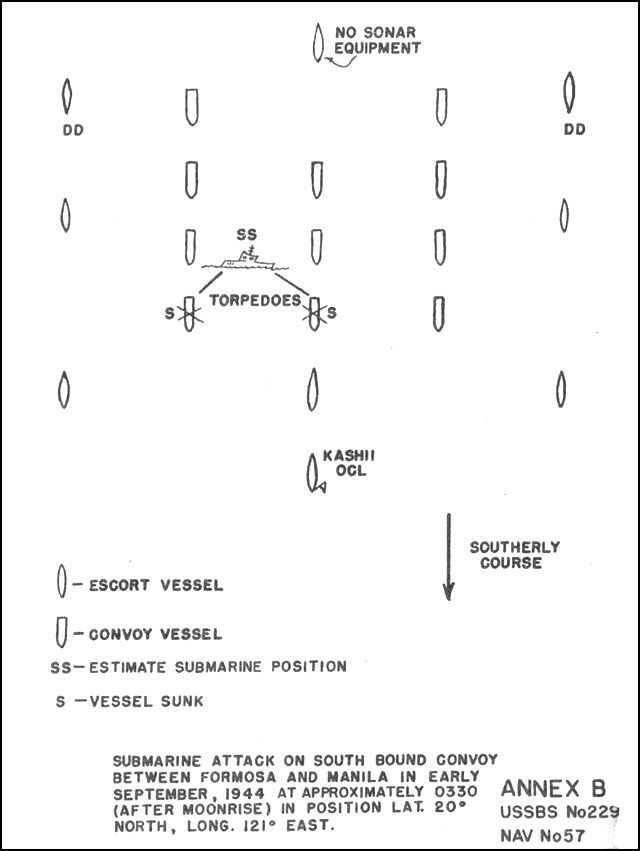  The illustration description taken from the United States Strategic Bombing Survey of a typical USN 1944 convoy attack shows that the Japanese had learned nothing either about ship dispositions between the wars, either. The Naval Onion.
The principles of the naval onion or the layered defense was not exactly equivalent to the WWI developed land tactic of defense in depth. It was rather the acknowledgment, or should have been, that the naval problem of survival in a three threat characteristics environment where a surface fleet floated on the boundary layer of a liquid over-capped by a gas, allowed the enemy to swim under the fleet, fly over the fleet and chase that fleet with a surface fleet of his own. Consequently: observation, that was / is detection, acquisition, before track, and engagement was a time distance and vector analysis problem of considerable interest. It would make a great deal of sense to tailor the tactical operations of BLUE along the main axis of expected intrusion into the detection layer, (3) so that specialist BLUE tailored assets could be oriented to meet the type of expected threat along the vector in the next layer (2). In the generic example above, this was the predicted threat distribution ORANGE could mount off Okinawa. ORANGE wanted to reach (1). BLUE obviously wanted to prevent that situation. The rotten thing about the Fleet Problems, was that this exact situation was predicted as ORANGE TEAM began trouncing BLUE TEAM in aircraft carrier and submarine simulated warfare by 1935. Yet, nobody, BLUE, paid enough attention to the need to develop either reconnaissance or assisted mechanical sensor means to that detect and acquire aspect of the problem. They were blind mechanically, doctrinally, and functionally. . You might consider one more example:  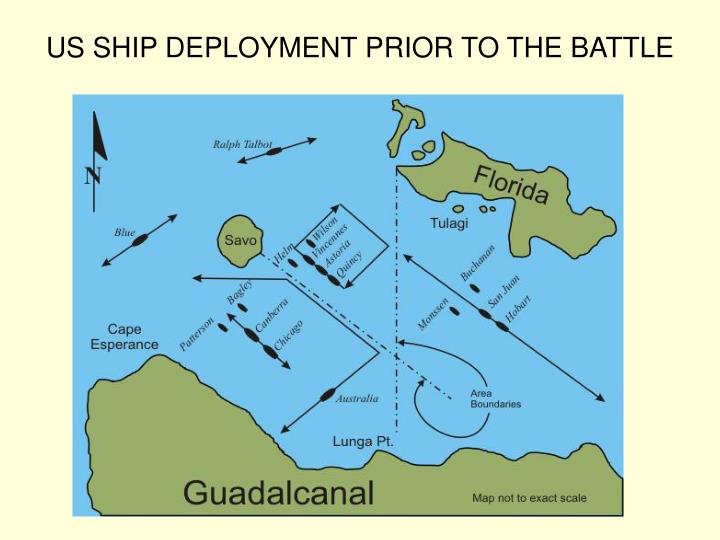 There were two possible threat axes to the Guadalcanal landings. Northwest from Rabaul was one. Northeast from Truk was the other. The same exact expletive deleted imbecile who botched the TF62 cruising disposition to CACTUS (Lunga Point at Guadalcanal just east of the Henderson Field where the Americans came ashore.) was that idiot, Richmond Kelly Turner, who failed to unload the transports expeditiously, failed to set up the Tulagi seaplane base on time, failed to establish shore based air reconnaissance to the northwest or to the northeast and who scattered his anti-surface warfare assets about as if he was Horatio Nelson about to refight the Battle of Aboukir Bay.  At least Nelson pulled his scattered ships together and used his frigates properly to ascertain the enemy threat axis. The nitwit, Turner, micromanaged to the point where he divided command three ways, called away the officer in actual tactical command, a FUD who looked like a refugee from The Ghost and Misses Muir.  The result was inevitable. By BLUE failing to establish a correct zone (3) asset reconnaissance distribution (His seaplanes and submarines to the northwest and northeast.), and to employ his surface warfare oriented assets properly in zone (2) (Again northwest.), ORANGE was able to exploit BLUE's blind condition and demolish half of BLUE's available anti-surface warfare assets with paltry hazard to his own forces. Self-imposed disunity of command and cowardice in battle ( Captain Bode of USS Chicago), compounded the dispositional errors Turner made in zone (1). This collection and collation of imbecility, that was Savo Island, should have been thrashed out in peacetime in the 1930s. Those fleet problems burned up millions of dollars in the 1930s exercises. Not only should have the lessons earned about how blind the fleet was to enemy surprise, without a strong and ongoing reconnaissance element in zone (3), apparent, but as a result of those fleet problems, officers of dubious quality should have been identified and cashiered for incompetence, as well as effectors tested out and properly validated in "near war conditions". ======================================================= The modern USN has returned to the Fleet Problem way of doing things in the mistaken belief that it was the fleet problems that taught it how to fight tactically in WWII. The error is that the fleet problems taught it how to refight Jutland indecisively, as the British already had. The Americans had not learned THE NAVAL ONION, nor had they worked out the human being kinks in their organization, nor had they evaluated themselves honestly in the material condition sense. Nobody, human or machine, can predict or prepare perfectly how human beings in the aggregate or launch platforms and effectors will interact at the moment, but we, human beings, can cut down the odds against us significantly enough, that we can make remarkably accurate predictions, over time, if we have good is / was data. What that means is that we use game theory. This was not formally developed until John von Neuman published his mathematical encyclical in 1944, but as early as 1895, Alfred Thayer Mahan was applying it to solve the "British" problem. The point is that you can explain stupidity post-hoc, but cannot justify it pre-hoc, if you can prove that the idiots in charge did know, but failed to do due diligence. That is supposed to be the reason we have boards of inquiry and courts-martial. 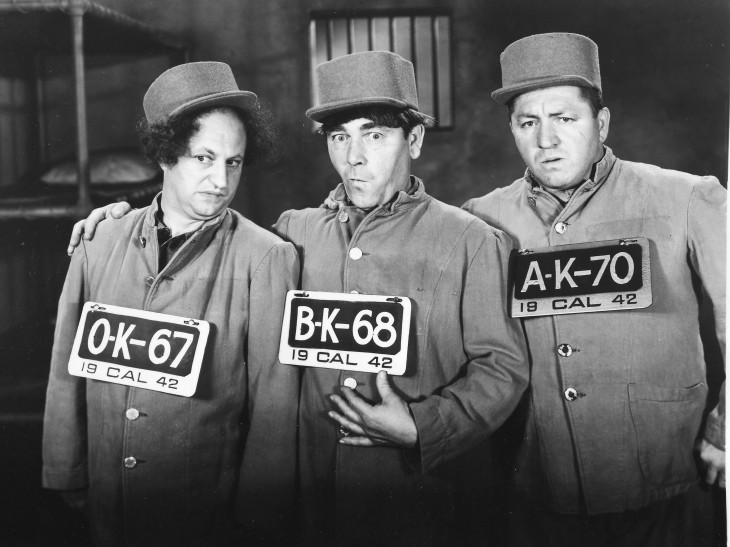 |
|
miletus12
Squadron vice admiral
To get yourself lost, just follow the signs.
Posts: 7,470 
Likes: 4,295
|
Post by miletus12 on Jul 7, 2023 4:49:43 GMT
A recap of the previous post. And rest assured, reader, we will discuss that one.  This very simplistic diagram reflects the local application of THE NAVAL ONION In a strictly 1930 sense, the BLUE team was capable of radar and sonar (not to scale, but approximate to ratio) sensor superiority over the ORANGE team as represented in the diagram. It must be understood that ORANGE team was limited to optical search for sky and surface threats to his naval surface launch platforms. In functional terms, ORANGE team had the experts who could have produced RADAR and SONAR equivalent to BLUE team or BLACK team. Their fault condition was their technological manufacture base. They lacked the ability to build the necessary MILSPEC electronics. ORANGE team did have a recon search advantage in that ORANGE team aircraft generally, class for class and type for type, outranged BLUE team aircraft by 50% time aloft and thus had longer effective search radii in any coverage plan overlays prepared to scan a given volume of air and sea. This advantage in air warfare, did somewhat negate BLUE team's belated and late acquired RADAR advantage in air warfare. Both teams had SONAR, but did not know how to deploy and use it properly. Significantly, BLUE team never equipped BLUE capital ships with SONAR. BLUE team restricted SONAR to destroyers and escorts and submarines. ORANGE team followed BLACK team's practice and equipped as many capital ships with SONAR as possible for threat warning against enemy submarines and enemy surface ships via surface duct conduit effective out to 2 convergence zones under nominal conditions (About 20 nautical miles, if the sea states were favorable. M.). SONAR for ORANGE team was a threat detector and not applied as BLACK team did to attack contacts (Denmark Strait). It is significant that RED team, through enforced generosity (BLUE team Tizard Mission.) and STUPIDITY (ORANGE team capture of Singapore.), supplied working base model radar technology which BLUE and ORANGE rapidly exploited and surpassed. The difference in SONAR was that BLUE team obtained and maintained a unique technological advantage that allowed the abundant and cheap m, manufacture of thousands of effective systems which could be put on anything, or applied as throwaway drone platforms. (Sonobuoys.). The difference in RADAR systems was again abundance, in that ORANGE could only manufacture search sets and those in mere hundreds. BLUE was putting the systems out in such abundance that torpedo boats and aircraft and blimps and submarines had powerful search and FIRE CONTROL sets to detect, acquire, track, engage (DATE) enemy platforms. The four-step kill-chain was a thing by 1943. Significantly, RED team never universally developed this methodology generally, restricting the process to hunting for U-boats and intercepting enemy bombers. You would think that since RED invented the four-step kill-chain as part of their national air defense system, they would have used it offensively, but they did not actually do so. The proof of this error in application can be seen in the continued reliance on searchlight and night flare directed gunnery at Cape Matapan and North Cape, in those naval surface gunnery actions, at Taranto in the night torpedo action, and in North Atlantic U-boat surface gunnery kills. For the BLUE team, RADAR was an offensive tool for ranging in AAA as well as anti-ship gunnery. In night intercept of enemy air raids, AAA guns relied on radar. As a corollary, SONAR and RADAR for BLUE team submarines were used akin to BLACK team doctrine as a means to steer to contact. It was unique to BLUE team to obtain torpedo solutions through the use of RADAR and SONAR, when optical conditions were substandard. Such was the importance of a sensor advantage, that BLUE team came to rely on RADAR as a means to stage ambush gun and torpedo actions in bad weather and conditions of reduced visual applicability, in which ORANGE team optical systems, generally superior to BLUE, were rendered null. ====================================================== In general, the sensor adjunct that extended the depth of situation awareness and provided the possibility of superior information management in a time constrained manner, allowed BLUE to neutralize the following ORANGE advantages: a. longer ranged aircraft. b. superior aircraft carrier sortie rates and operating tempos. c. superior optical fire control systems. d. better ASW air cover. e. superiority of numbers of platforms, 1941-1944. f. superior tactical movement speed. g. superior defensive geographic situation. To be BLUNT, the Americans, through 1942 and 1943, built the sensors and learned how to use them in such wise that they could see and hear their enemies before their enemies saw them. This allowed for game theory application of deployment along threat vectors of too few resources: The 1st and 2nd Guadalcanal, plus the Battle of the Eastern Solomon Islands, hundreds of raids from Rabaul, and so many barge battles that not even the United States Navy is sure how many barges they destroyed (The Japanese claim 40,000!) The point is...  For fleets, and...  for individual platforms... very much resembles From where do you think the cybersecurity idiots learned THE ONION? |
|
miletus12
Squadron vice admiral
To get yourself lost, just follow the signs.
Posts: 7,470 
Likes: 4,295
|
Post by miletus12 on Jul 8, 2023 19:57:33 GMT
So; you have figured this stuff out by 1930? The battleship is a bomb and torpedo magnet, the freighter is about to become the principal objective in the next naval war, and you have your naval staff working on the solutions to finding, orientating and engaging the enemy fleet, because "there will always be a Jutland", and you do not want to screw it up like they did. ================================================================================  We had NO IDEA where they were during most of this chaotic engagement... ================================================================================  Is that American? Is that American? ======================================================= Just how stupid are you, USN? |
|
miletus12
Squadron vice admiral
To get yourself lost, just follow the signs.
Posts: 7,470 
Likes: 4,295
|
Post by miletus12 on Jul 9, 2023 14:36:49 GMT
 Some things never change. What you see here is a rough approximation of this timeline problem for the Japanese, if these three things exist by 1940. C. → 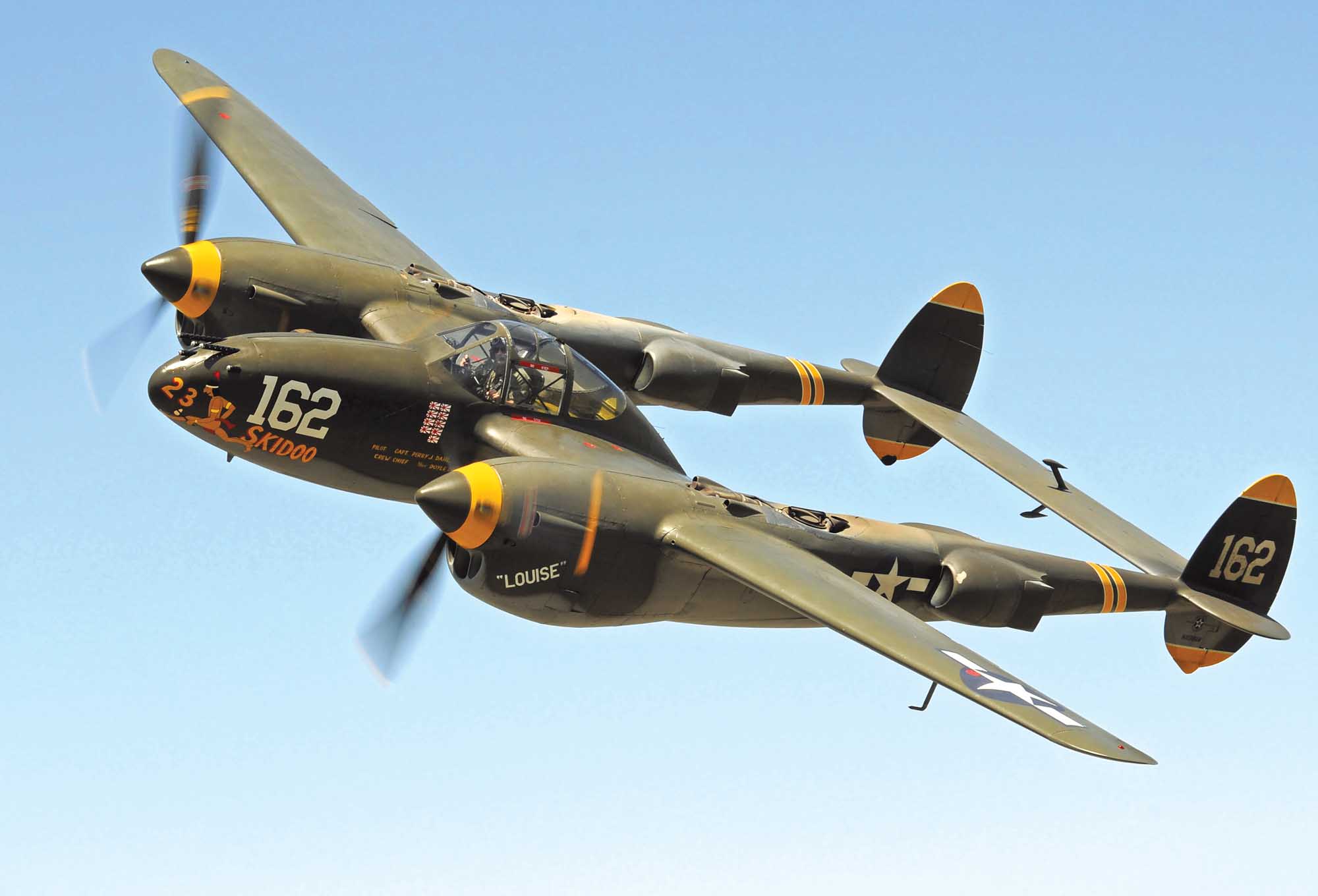 B→  A.→ 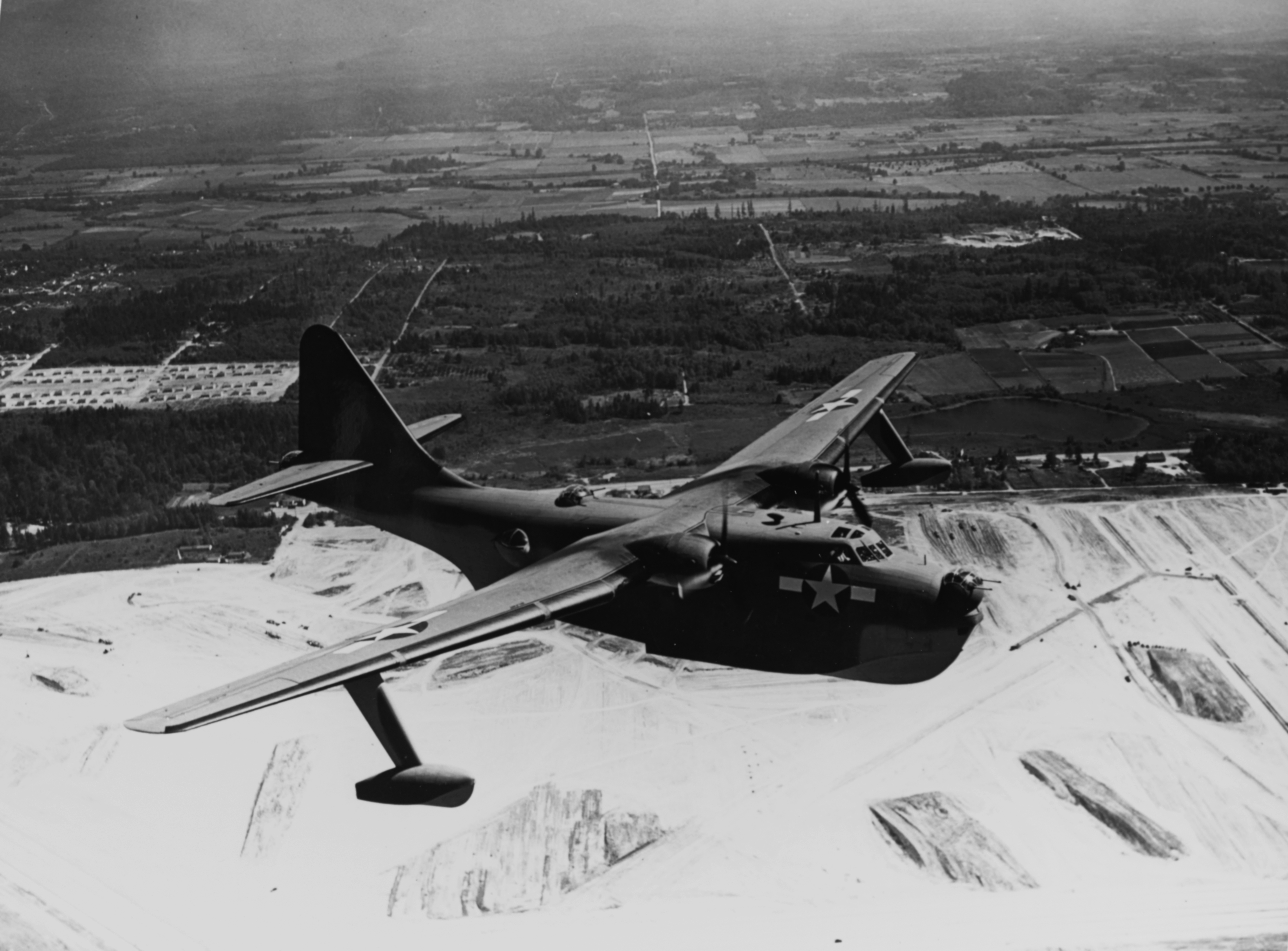 Those are the P-38 Lightning, the B-26 Marauder and the PBB Sea Ranger respectively, a 600-mile radius fighter-bomber, an 800-mile radius bomber and a 1,500- mile radius amphibious seaplane, each of which could use a 3,000-foot runway and carry a torpedo. That would have been a smart USN. |
|
miletus12
Squadron vice admiral
To get yourself lost, just follow the signs.
Posts: 7,470 
Likes: 4,295
|
Post by miletus12 on Jul 10, 2023 13:40:14 GMT
Have we finished with THE NAVAL ONION? Not quite. 
The basic difference from what we previously discussed as that this is the "onion" using 1920s and 1930s technology against the expected era air threat. That is the naval platform versus the aircraft which attacked it.This is the part which excites the amateurs, because they think of the application from a "shooter perspective" rather than from the correct perspective. Like that amateur... (^^^) =================================================================== If you were charged with addressing the issue of the airplane at sea, you faced the threats of the level bomber, the dive bomber and the torpedo bomber. The Dive bomber came at the ship from the forward or aft quarters, the torpedo bomber came from the side (beam attack) from the forward quarters and the level bomber came from any compass bearing point but usually liked to drop in a crossing attack fore to aft or aft to fore. The torpedo bomber drop-released close with a low angle of inclination and very little cross drift in horizontal slue track. The horizontal bomber could arrive at any angle of inclination at its approach in the vertical track-inclination component despite what the incompetent British navy thought, as German bombers attacking at mast height taught them. Dive bombers were the hardest track problem, since they appeared in the aimer's field of view as a slant object with both a high traverse and vertical climb track component. Various navies tried to solve for the radically different traverse elevate track requirements for the different aircraft attack profiles, as an AAA gunner / aimer would see it. NONE OF THEM got it right. The closest to solving the matrices were the Americans. They developed an almost universal mechanical tracker that allowed for high, mid and low angle solution on aircraft up to 400 knots crossing component. They were not so good with dive bombers, but they could slaughter torpedo planes and level bombers, provided they could obtain the right flak guns to do it with the correct ammunition. They made two major attempts: a. the 1.1 inch / 70 gun. This was intended low angle and inner defense. b. the 5 inch / 38 gun. This was intended for high angle and outer defense. Both relied on that universal directorThe 5 / 38 proved successful mainly because it was not challenged until the very end of the war by a diving threat that it could not handle. The Japanese, Germans and Italians proved lousy at dive-bombing. Even in the Kamikaze phase or the Fritz X phase, the Axis chose the wrong attack profiles. The Kamikazes came closest to swamping the target track service rates of American warships' AAA. The 1.1 / 70s failed, mainly because of a supersensitive fuse in the rounds. These were hit to kill guns with impactor shells, rushed into service before trials were complete. The guns were presumably able to perform as intended once shell fuses had been fixed. In this wise, they were not unlike the Japanese 25 mm/60 (1 inch) Type 96 machine gun in function. The problem with either guns in US or Japanese service was the error in lay and track solutions. If you were going to splash a plane inside the inner defense zone hemisphere, you mechanically had to saw the plane or blow it apart, That meant either a machine gun with an absurd rate of fire and high velocity ammunition or something smaller than a 5 inch with a hit to kill medium velocity explosive shell. Update that concept. |
|
miletus12
Squadron vice admiral
To get yourself lost, just follow the signs.
Posts: 7,470 
Likes: 4,295
|
Post by miletus12 on Jul 11, 2023 9:44:31 GMT
Inaccurate clickbait.There is a lesson here in how the first type built is first sunk. It is interesting to compare Akagi to the USS Lexington
. He is still an "amateur". Or it can be the lesson of complete imbecility and acceptable competence.^1 I refer to the two USS Hornets. The lessons of Akagi and USS Lexington were mainly design defects, as both ship's crews were decidedly well-trained in damage control. Fitch handled his aircraft carrier in battle much better than the incompetent Nagumo would handle his, but that is not what killed Akagi. It was the lack of shock mounting among the pump stations and piping among the fire main system that rendered Akagi's aft automatic sprinkler system and hose stations inoperative. Add in the draft alley and no hangar cross ventilation, defective fire curtains that jammed in their shutter runners, and aircraft elevators which descended below the hangar into the bilge wells, and you had a floating blowtorch that needed a spark and sustainment fuel to rearrange her into a suitable condition from the American point of view. It helped to doom the ship that the Japanese adopted the incredibly stupid British practice of strike below to refuel and rearm planes in a mostly enclosed hangar. Kaboom, was followed by burn-down. USS Lexington was lost through damage control errors similar to those that would kill Taiho, Soryu and eventually Shokaku. Basically, when the piping to the fuel system, not shock mounted, which supplied aviation gas, ruptured; the vapors released created a fuel air explosive that would ignite and engulf the ship. Similar to Akagi, the fire mains failed. End of the USS Lexington. ^1 You have to work with what incompetencies you find in a Wiki article. It was obviously written by a non-American. The USN design philosophy was exactly like the purported "Japanese design philosophy" which was to pack as many planes into an aircraft carrier as possible. The "Japanese aircraft carrier design philosophy" was to AUTOMATE the process as much as possible, so as to get aircraft into the air as fast as possible, turn them around and cycle aircraft sortie operations. When you get into details about what they wanted to era build, you find the armor plating of magazines, fuel lines, and fire mains you do not find on American aircraft carriers, due to weight and stability issues the Americans refused to ship characteristics compromise about. The Japanese "automation" such as their firefighting systems and takeoff and landon setups was to reduce berthing, manning requirements, speed op tempos, and to make machines do what the Americans cheerfully crammed men into an aircraft carrier to do. Now, both navies did not do enough shock testing pre-war to prevent fuel spillage and vaporization of fumes from leaking fuel storage. That was inexperience. The Japanese did not accumulate enough survivor experience, nor did they have enough time to remedy their inbuilt human training, operator process, and engineered design defects in aircraft carriers, so they repeated their mistakes. Same for the British, who taught the Japanese these wrong lessons to begin. The curious thing about USS Lexington, which led to the far tougher and error forgiving Yorktowns was a little incident between the wars. She caught fire and was nearly lost due to "fire in the paint locker" human stupidity. The lessons were applied, but still were not enough until POSTWAR, when the still defective Essexes were rebuilt to a better fire safety standard. During the war, the accepted shortcomings had to be paid for in dead sailors as a "fight and die for the ship" damage control culture was substituted for more sound engineering and preventable safety measures during battle. The USN really believes in the sailor solution to overcome mechanical faults. And to be honest, when compared to foreign practices, it has proven to be the correct solution.
|
|
miletus12
Squadron vice admiral
To get yourself lost, just follow the signs.
Posts: 7,470 
Likes: 4,295
|
Post by miletus12 on Jul 12, 2023 12:16:43 GMT
By now you should realize I have little use for this "amateur"; since he is stuck in superficialities and does not consider the actual situations and operants in play. He does get most of the facts approximately correct without understanding the politics involved or the rational for why a navy would do something this incredibly wasteful and stupid. I pick on these lemons because they are low-hanging fruits. They are easy teaching examples to show why me-tooism in the 1930s was and in our modern era, is a wrong way to approach how a navy should be built. Notice that I wrote a NAVY, not a ship? Let us look at a ship that cost the near same to build, fuel, victual, man, arm and operate. These silly things were armed with twice the AAA, had superior radar, armor, better turning circles, a 3x torpedo defense, better fuel economy and cost the same to build, fuel, victual, man, arm and operate as an Alaska. They used up the same amount of raw materials. What was the operating characteristic difference that the Alaska class proponents claimed that justified the Alaskas? The top speed of a South Dakota class was 4 knots slower than was the Scharnhorst class. As a practical matter, the South Dakotas were as fast as any German, French, British or Japanese modern capital ship in a North Atlantic seaway which was functionally 24-27 knots. King obviously had lost the thread of the plot in 1940 when he said that nonsense. That was 1943. Which of the two men was correct?The key point to remember about the 1930s was that there was still uncertainty among naval tacticians about whether airplanes could be massed in enough numbers in time to kill ships, provided that a navy could even find an enemy raider and track that lone wolf ship upon the high seas long enough to mass the effectors. The prevailing accepted opinion was that the raider would have to be hunted down by "cruisers" and killed; a la USS Kearsage versus the pirate ship Alabama. The confused admiralties were not thinking clearly, except for the French who understood that chasing raiders was a combination of cruiser convoy escorts, who would meet the raider at the convoy, and hunt for the raider with a force de raid, by being steered onto the enemy raider by one of these things: Now obviously, ADM Castax, the French naval theoretician had wanted to replace the slow MNS Bearn with a pair of better Joffre Class aircraft carriers. Someone thought about a naval problem as a NAVAL problem, instead of a ship versus ship problem. ========================================================= So, by 1940, before the first keel member was laid for the badly designed and incompetently conceived Alaskas was laid down; was there sufficient experience in peace and war to negate the futile exercise? Well, Henry Harwood bungled the Battle of the River Plate by 13 December 1939, but still managed to send off Langsdorf and the Graf Spee. We can safely ascertain that ADM King, that idiot, Stark, and RADM Spruance, each, had the general information about how the British navy could mass cruisers to deal with a raider, provided the raider was obliging enough to show up long enough to massed against. A whole lot of NTB necessary for that evolutiion had to be invoked to force the evolution.^1 ^1 "Not too bright" in the intellectual department. Stark, being a glad hander and a gun clubber, a man of no discernible merit, who would critically fail the Republic in those disastrous years when he was CNO, passed and approved the stupidity when he advised Knox and FDR on the 2 ocean Navy Bill. He wanted 6 Alaskas. The bozo reasoning he used to justify the 6 number, was that with the 7 US aircraft carriers existent plus the 3 new ones approved, the USN needed 6 new cruisers to escort the 3 new flattops at the 2 cruisers per flattop rule, the USN used as a baseline. Here is a hint. Stark was thinking about this British Navy performance at the time. Never mind that the three idiots responsible for that debacle, Churchill, Pound and the apparently psychotic Guy D’Oyly-Hughes were the actual reason that Scharnhorst and Gniesenau blundered into HMS Glorios. Between them, Pound and Churchill, as they would do with Force Z, sent a wrong and inadequate naval force under the command of a complete idiot to the slaughter on 8 June 1940. Except, if you were going to spend that kind of money for those reasons, would not 6 South Dakotas make more sense? |
|
miletus12
Squadron vice admiral
To get yourself lost, just follow the signs.
Posts: 7,470 
Likes: 4,295
|
Post by miletus12 on Jul 13, 2023 19:27:59 GMT
What are we doing on the world ocean?  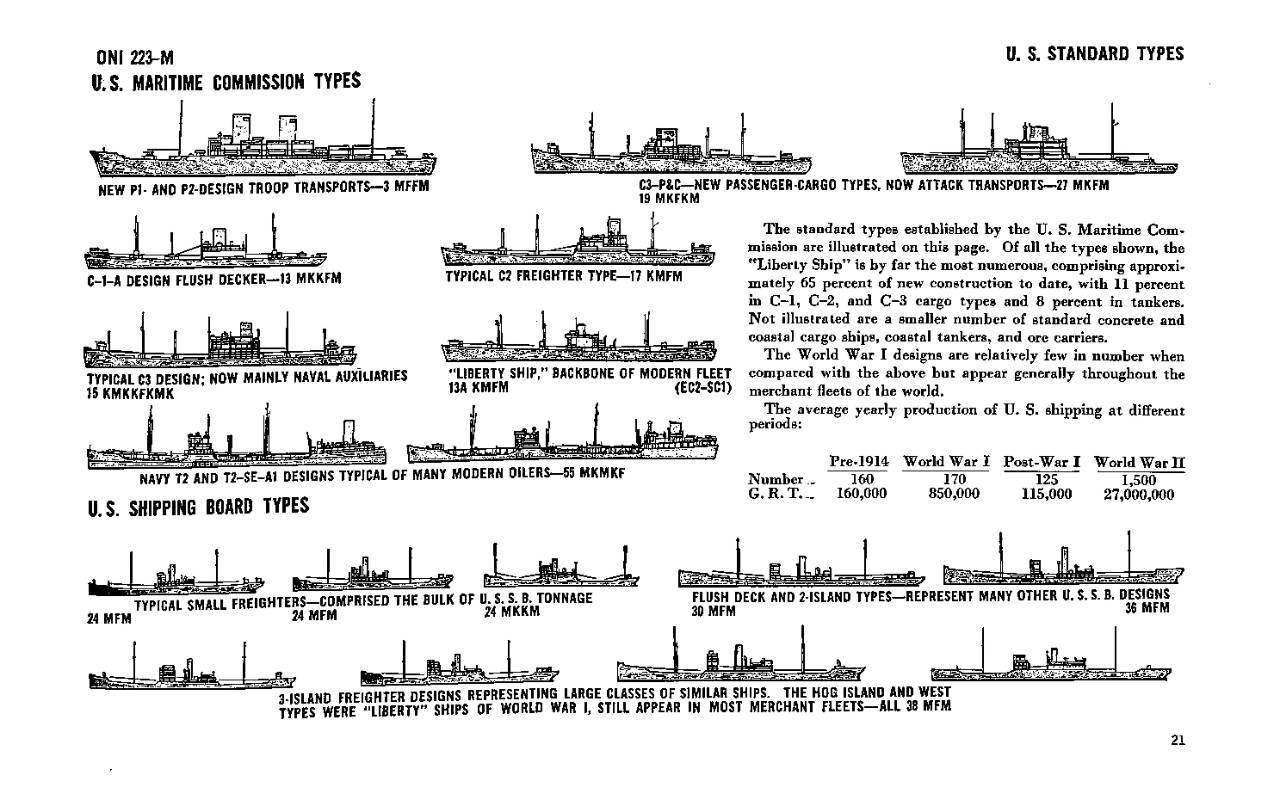 Ours, we protect. Others, not ours, we sink. That is the dogma according to Mahan. Why?  Seems simple enough. One of the problems with the exercise is that the competitors out there on the world ocean want to do the same thing to us. Now, while that is a 2022 traffic distribution map, it is about the same now as it was for conditions in 1930 as to ship borne commerce. As a result, if you were OP-20-K and planning a naval war in 1930, you would be very exercised about the Caribbean Sea and South American northeast coast, the North Atlantic and North Pacific Ocean lanes, somewhat concerned about the choke points at both ends of the Red Sea and very interested in the Cape of Good Hope and the Malacca Straits. It is somewhat shocking how dense the flow around the southern tip of Africa is, but when you consider how screwed up traffic management through the Suez Canal has always when the British mismanaged it, and now the Egyptians, well that is a submarine happy hunting grounds. ================================================================= In the 1930s, what do we want to build to accomplish our very simple goals here?  ![]() The whole rational for building a navy from this viewpoint is to tailor the tools to the use / denial of merchant ship traffic upon the world ocean. The starvation of an island nation or the collapse of a continental industrialized nation by denying aforesaid nation's access to raw materials it does not have (Like fertilizer and trace rare earths for Germany for certain steel alloys.), while sustaining that enemy nation's adversary(s) with your trade, does not require showy battles, but it does require patrol, escort of convoys and blockade efforts. Battleships do not make a lot of sense by that rational. Cruisers and destroyers, aircraft carriers, mine-layers, and submarines do.  Do not forget the airplanes... |
|
miletus12
Squadron vice admiral
To get yourself lost, just follow the signs.
Posts: 7,470 
Likes: 4,295
|
Post by miletus12 on Jul 14, 2023 12:16:10 GMT
This is why you do not allow landlubbers discuss operations upon the world ocean.Mister Watts has about as much understanding of ADM Mahan as he has the actual operations of seapower during WWI. The "great naval battle for command of the sea" in WWI was the "Battle of the North Atlantic". 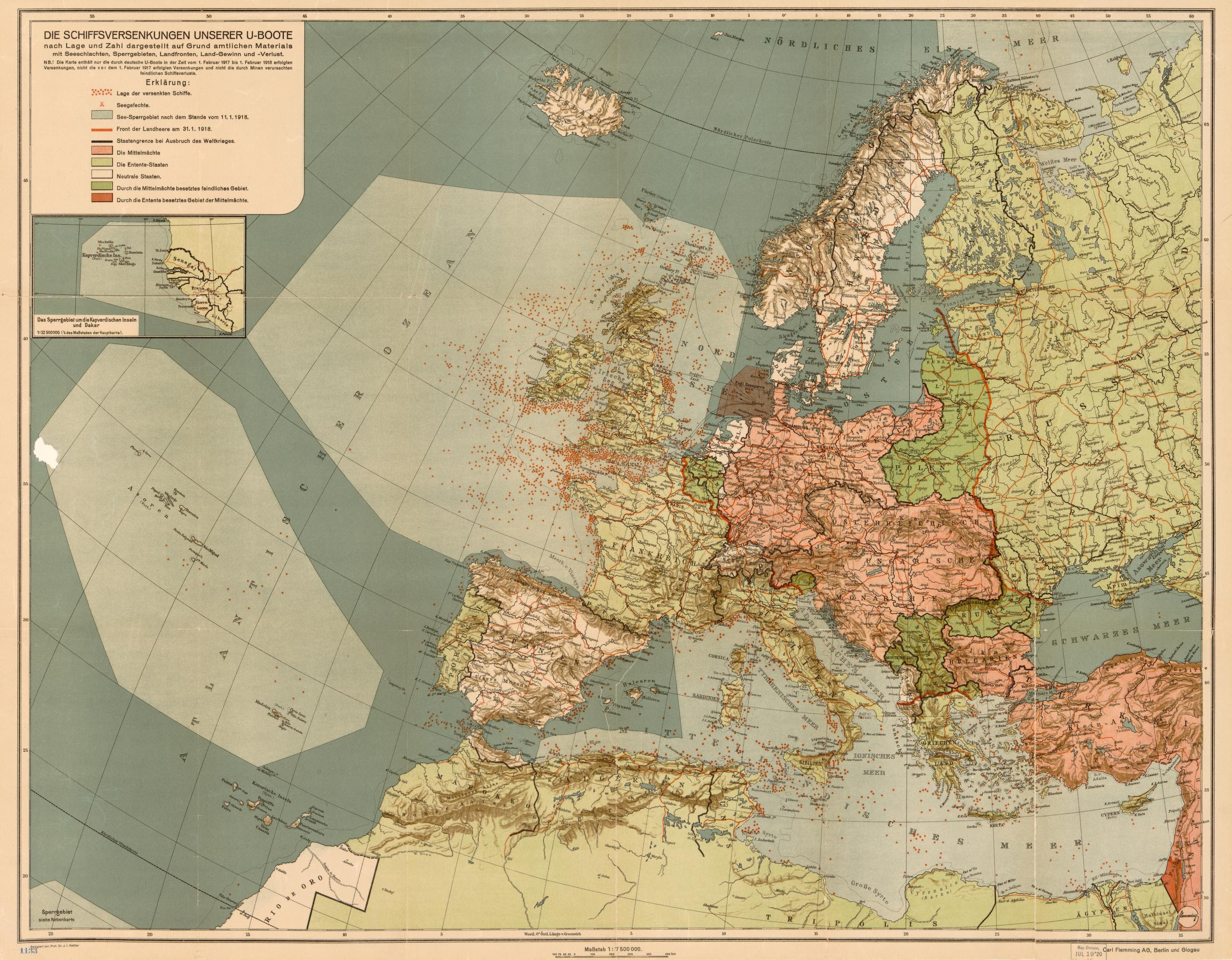 As usual, the inept British initially bungled the battle and stubbornly refused to learn quickly that the threat to their nation lay not in the North Sea with the High Seas Fleet, but with the actual blockaders the Germans could employ against the British, the submarine weapon system. In the modern example of the Chinese enemy, if Mister Watts would have bothered to actually look at what the American navy does, instead of what he writes, he would notice that the capital ship under urgent construction is the submarine. Obviously it is a misread of history to assume that the United States Navy plans to to refight the aircraft carrier based tactical campaigns of WWII, or rather Mister Watts completely misread what happened, in Mahanic terms. To illustrate to the reader,  You will notice as the United States Navy extended its coverage east, how the U-boat war changed? The U-boat was Germany's blockade weapon, usaed according to the denial paradigm as described by ADM Mahan. Now look at the Pacific... 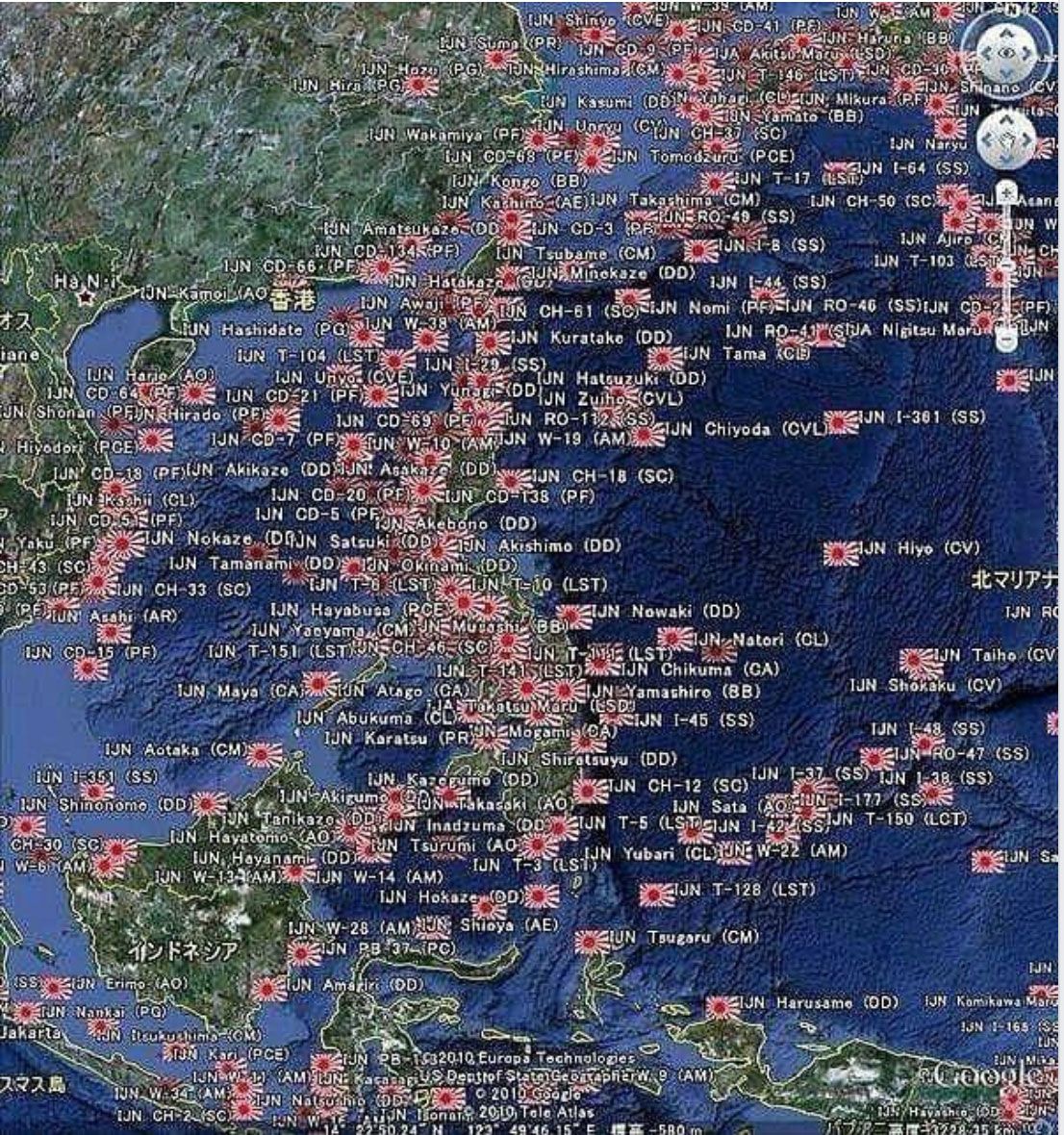 US submarine KILLS of Japanese shipping.  US aircraft carrier operations. The two elements, the submarine campaign and the aircraft carrier operations tended to support this: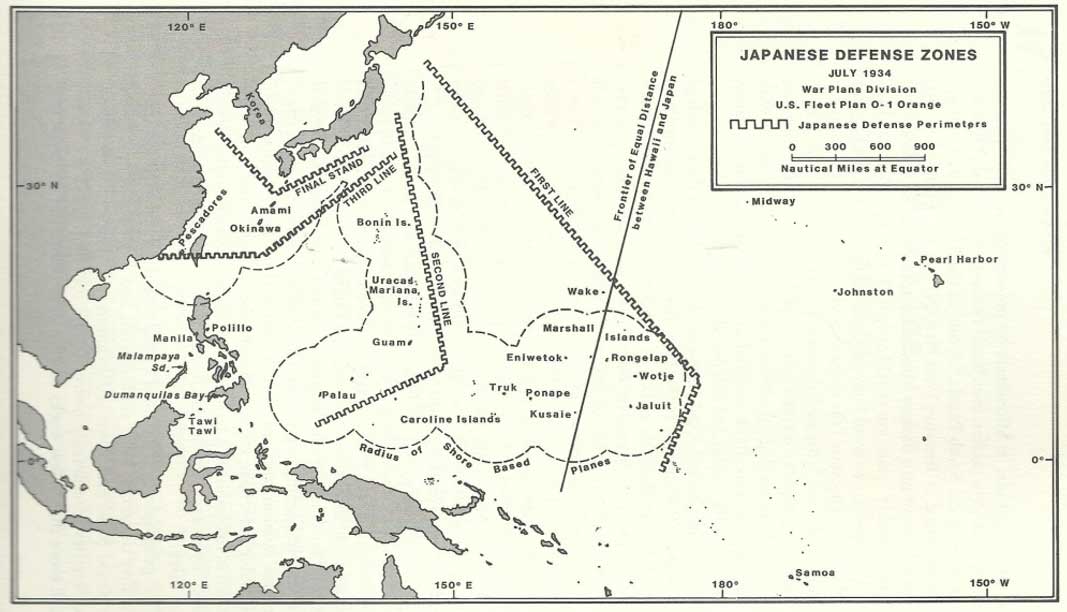 The USN in the 1930s was not about fighting "the big battle" against Japan. It was about establishing use and denial of the Pacific Ocean. Belatedly, after the British failed to seal the deal in the Atlantic, it tacked on the Atlantic use / denial mission as well.
|
|
miletus12
Squadron vice admiral
To get yourself lost, just follow the signs.
Posts: 7,470 
Likes: 4,295
|
Post by miletus12 on Jul 15, 2023 14:58:24 GMT
 How do you plan a submarine campaign for PLAN ORANGE 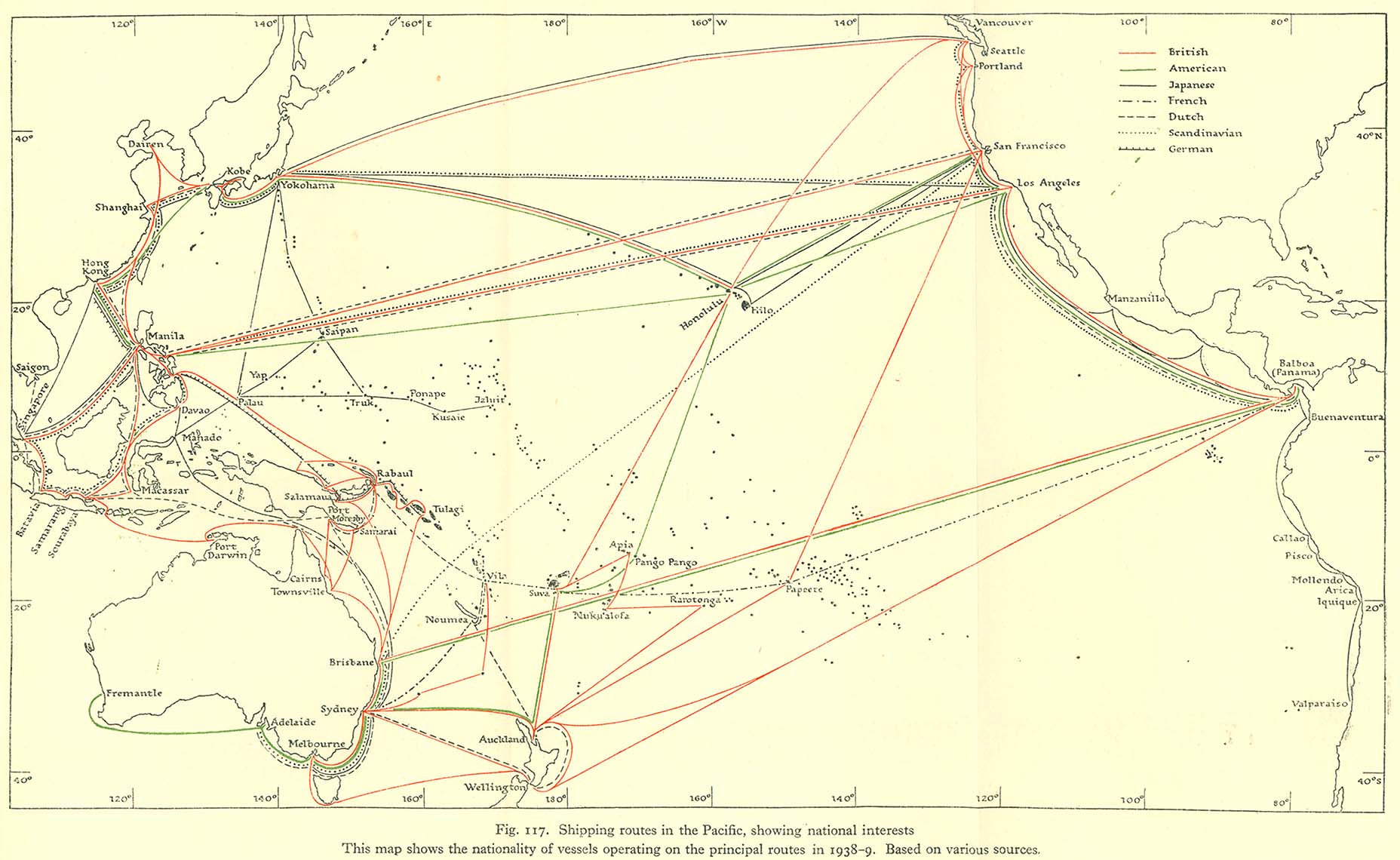 if you have never fought one before? 
You just might take a look at several factors... Whether from Brisbane or Perth it would take US subs about 2 weeks one way to reach their assigned patrol stations in the Philippine and South China Seas.  From Pearl Harbor to reach their assigned stations in the East China Sea and off Japan proper would be two weeks one way. US subs had six weeks patrol sortie time available by fuel and victuals.  Those are transit times for atomic submarines. Multiple 3x-4x for diesel electrics. The geography of the Western Pacific Ocean gave the Americans from Pearl Harbor a straight and clear route right at the Japanese ship traffic between Taiwan and Sakhalin. But to get at the rubber, tin and oil, and to starve the Japanese of strategic raw materials, American submarines had to run the Gauntlet of the Indonesian and Philippine Islands. Here were SHALLOW seas where there was no depth to be had and where Japanese sub-chasers and ASW aircraft would be plentiful. They would have an easy ASW war, compared to the Allies in the North Atlantic. That map, you see reader, indicating where American submarines operated? Each numbered dot is also where a US submarine DIED. The casualty rate for submariners is traditionally the HIGHEST of any service branch, and THAT is if everything goes exactly right. 20% historically for the United States. It should have been less. Expletive deleted. |
|
miletus12
Squadron vice admiral
To get yourself lost, just follow the signs.
Posts: 7,470 
Likes: 4,295
|
Post by miletus12 on Jul 16, 2023 23:43:24 GMT
Remember that this is an alternate timeline and we are still ~ 1930. Let us plan effectors? 1. 16-inch/45-caliber Mark 1, 5, & 8 guns2. 14-inch/50-caliber Mark 4, 6, 7, 11 & B guns3. 10-inch/40-caliber Mark 3 gun4. 8-inch/55-caliber Mark 9, 12, & 14–16 guns5. 8-inch/45-caliber Mark 6 gun6. 6-inch/54-caliber Mark 12, 14, 15 & 18 guns7. 6-inch/50-caliber Mark 6 & 8 guns8. 6-inch/47-caliber Mark 16, 16DP, & 17 guns9. 5-inch/51-caliber Mark 7–9, 14, & 15 guns10. 5-inch/50-caliber Mark 5 & 6 guns11. 5-inch/38-caliber Mark 21, 22, 24, 28–30, 32, 37, & 38 guns12. 5-inch/25-caliber Mark 10, 11, 13, & 17 guns13. 4-inch/50-caliber Mark 7–10 guns14. 3-inch/50-caliber Mark 2, 3, 5, 6, 8, 10, 17–22 guns15. 1.1-inch/75-caliber gun
From a technical standpoint, those were the only viable elements of naval artillery in the real / atl timeline as of 1930, either existent or programmed for development, that were viable. I would probably pare that list down by eliminating the non-treaty compliant 10 inch and the 5 inch and 6-inch guns which were not DP, nor AAA. I would eliminate the 4-inch guns as non-useful as well. 1. 16-inch/45-caliber Mark 1, 5, & 8 guns2. 14-inch/50-caliber Mark 4, 6, 7, 11 & B guns3. 8-inch/55-caliber Mark 9, 12, & 14–16 guns4. 6-inch/47-caliber Mark 16, 16DP, & 17 guns5. 5-inch/38-caliber Mark 21, 22, 24, 28–30, 32, 37, & 38 guns6. 5-inch/25-caliber Mark 10, 11, 13, & 17 guns7. 3-inch/50-caliber Mark 2, 3, 5, 6, 8, 10, 17–22 guns8. 1.1-inch/75-caliber gun
As to the AAA threat, I would have sent out an overseas shopping expedition for guns to cover that key altitude band of 2,500 to 7,000 meters that no one covered well in the 1930s. a. Bofors 25 mm Automatic Gun L/64b. Bofors 40 mm Automatic Gun L/43 c. Bofors 40 mm Automatic Gun L/60What about other effectors? --Mark 7 (Bliss-Leavitt) torpedo--Mark 8 (Bliss-Leavitt) torpedo--Mark 9 (Bliss-Leavitt) torpedo --Mark 10 Torpedo--Mark 11 Torpedo--Mark 12 Torpedo--Mark 13 Torpedo--Mark 14 Torpedo--Mark 15 Torpedo
Of that collection of garbage fish, I would hang onto the Bliss Leavitt torpedoes, especially the Mark 8 Bliss Leavitt. The Mark 13 should have been live fired until it ran hot true and normal. Of all the torpedoes, the one that was most critical was the Mark 14 model. Not only was the testing screwed up, but the expletive deleteds who designed the thing, gave no thought at all to the fail path analysis in single fault loss of effector before function components. Nor did the idiots consider how essential it was to have an effector that could be mass-produced in a hurry. |
|
miletus12
Squadron vice admiral
To get yourself lost, just follow the signs.
Posts: 7,470 
Likes: 4,295
|
Post by miletus12 on Jul 17, 2023 18:13:05 GMT
Going off-topic a little, I ported this one in as a naval geography lesson. Yes, reader, there is such a thing as key terrain features within an ocean.  If you want to bring British, German and JAPANESE imperialism to a screeching halt in the Pacific, make that key terrain American in 1898. The Philippine Islands could become a client like Cuba, which would still be disgraceful, but it would not involve the criminality, nor the direct dishonor of imperialist misgoverning. The blue outlined region by contrast was a more manageable administrative and defense problem. Better map.  Interesting idea, miletus12 ! What is the essential part of your proposal - everything within that parallelogram box, or everything within the blue shading? The parallelogram is vital. The subsequent blue area of domination is the inevitable spillover where outside interlopers would be neutralized as a result; since they have neither the basing, nor the logistics to operate in those waters; once the parallelogram is under positive control. Note that the Japanese, once they had that parallelogram, were extremely difficult to dislodge? It was only due to their sheer naval incompetence that the Americans were able to wrest the region from them. ------------------------------------------------------------------------------------------------------ To add into that mapping overlay the factors I suggest that make that naval geography, key terrain; I submit the following criteria.  When I use the term "dominate" I mean in the strictly Mahanic sense, which is to allow or deny use of the sea /air for transit. It does have a political component, since access is a political decision. However, the right of self-determination within those waters can and should be a guarantee by the naval power that dominates those waters. The only possible power in that era that would make that decision is an anti-imperialist one. That leaves out the Japanese, Germans and the British. The only ones who begin to qualify as possible respecters of the international law right to self determine, would be the Americans. And even the Americans are only defensible in that their historical political behavior actually matches what I described. Every other imperialist colonizer had to be kicked out by force. Too bad Vietnam spoiled that record. |
|
miletus12
Squadron vice admiral
To get yourself lost, just follow the signs.
Posts: 7,470 
Likes: 4,295
|
Post by miletus12 on Jul 18, 2023 20:36:45 GMT
|
|
miletus12
Squadron vice admiral
To get yourself lost, just follow the signs.
Posts: 7,470 
Likes: 4,295
|
Post by miletus12 on Jul 19, 2023 22:39:22 GMT
Okay, you fixed the radio communications, you tested your effectors, and you convinced your reluctant legislators to fund a build out to the treaty limits and even cheated like the British did to hide the fact that when war comes, you will clad your cruisers with additional appliquéing armor plate. You even went so far as to develop super-heavyweight torpedoes to go with your super-heavyweight shells. You trained your officers and crews in fleet problems during Caribbean hurricanes, which is a fair simulation of a Philippine typhoon. Now what? What is there left to do? There is the national ammunition stockpile. What the expletive deleted is the nationsal ammunition stockpile? You take your launch systems, that is the exact numbers by bore sizes / calibers of all of your launch systems in existence. Then you compute peacetime training rates and expected wartime use of ammunition (effectors) rates per year. Take the examples of torpedoes. 100 destroyers x 10 tubes = 1000 torpedoes + 2x reloads = 3,000 torpedoes 100 submarines x 10 tubes = 1000 torpedoes + 4x reloads = 4,000 torpedoes ========================================================================= 500 torpedo planes x 1 torpedo = 500 torpedoes + 4 reloads = 2,500 torpedoes You have a 1930 national ammunition stockpile requirement of 7,000 ship-launched antiship torpedoes and a NSN (national stockpile number) requirement for 2,500 air dropped torpedoes. Want to know your artillery shell requirements? 16 inch => 3,600 base load (1 battle) + 2 reloads = 10,800 shells. 14 inch => 7,200 base load (1 battle) + 2 reloads = 21,600 shells 08 inch => 13,500 base load (1 battle) + 2 reloads = 40,500 shells 06 inch => 90,000 base load (1 battle) + 2 reloads = 270,000 shells Now here is where it gets really hairy... 05 => 210,000 base load (1 battle) + 2 reloads = 630,000 shells 03 => 105,000 base load (1 battle) + 2 reloads = 315,000 shells 1.1 => 1,000,000 base load (1 battle) + 2 reloads =3,000,000 shells The Americans had 1/5 of that war year total on hand for WWII on 7 December 1941. They manufactured 4x that war year total to fight WWII in the Pacific. -------------------------------------------------------------------------------------------------------------------------------- Back in 1898 the Spaniards supplied what they thought was enough 7mm bullets for their garrison in Santiago de Cuba for 5,000 men for a whole year. 1,000,000 bullets would hold off the Cuban insurrectos at 200 bullets per trooper. Then the Americans showed up. That ammunition was gone in 15 days. Jose Valesquez gave up because he was out of bullets. Nobody talks about the USN ammunition crisis from May 1942 until August 1943. |
|
miletus12
Squadron vice admiral
To get yourself lost, just follow the signs.
Posts: 7,470 
Likes: 4,295
|
Post by miletus12 on Jul 20, 2023 20:50:06 GMT
There was another ammunition shortage... or should I call it "guidance system" shortage.  Those would be pilots and aircrew.  There were twice as many of those guys as the Americans had globally (3,300 versus 1,500 pilots). Notice that funny looking thing behind them with the TORPEDO? The Americans kind of lacked that land based anti-ship capability and the training to go with it. After 6 months of war, the Americans still had 1,500 trained naval aviators and 2,000 aircrew left. After Midway, they were down 189 PILOTS. In the entire Pacific fleet, the trained pilot shortage was so severe that the Japanese did the Americans a favor when they torpedoed the USS Saratoga. Now the Americans could staff up the three aircraft carriers they had left. The Americans had about 600 naval pilots left after the battle, with only 200 of them completely carrier qualified. After Midway, since the Japanese went to extraordinary lengths to save their pilots at the expense of flight and hanger deck crews, the IJN still had about 3,000 pilots, 1000+ of them completely carrier qualified. It takes two years to train a naval pilot in that era. Most of that is flying hours. About 500 to become proficient. The Americans threw six-month men (150 hours) in against the Japanese (600 hour + pilots.). You can guess how that turned out during the latter half of 1942 and most of 1943? NOT TOO GOOD. But it worked. The Japanese could not replace their air cadres as fast as the Americans churned out their half-trained yahoos. It might take 2.5 half trained Americans to kill 1 trained Japanese pilot, but if there was no replacement Japanese pilot, and that .5 American survivor passed on his on the job training to the "fresh meat", then rookie against rookie, the odds became EVEN. And at EVEN the Americans would always win, because now there were many more of them than Japanese in the air. More Americans lived to OJT into veterans and soon the trained pilots were all mostly Americans, not the Japanese. That is NOT the way to run a railroad. |
|



































 if you have never fought one before?
if you have never fought one before? 





